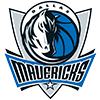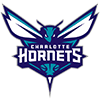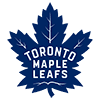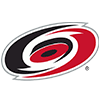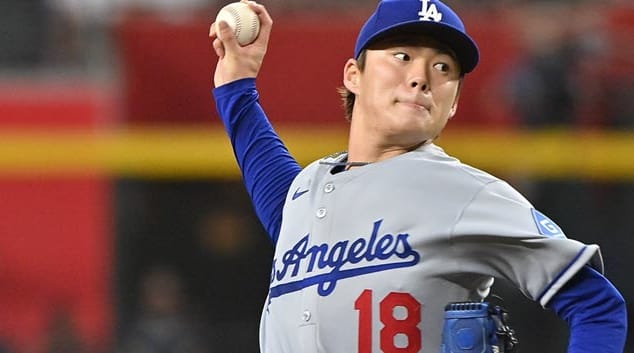Personally, I'm no longer a fan of target drafting. Drafting towards static targets may help keep your squad balanced but it completely ignores upside potential and downside risk. The draft or auction should set you up with the greatest opportunity to manage your team into the most rotisserie points. Drafting Chris Carter in the 21st round to make your home run target instead of a better hitter likely does more harm than good.
The goal is to win the league, not the draft.
I've looked at the initial rosters drafted by participants in the National Fantasy Baseball Championship Classic (NFBC) and compared the drafted totals to season-ending totals and, on average, 75 percent of final stats came from Opening Day rosters. The totals ranged from 65 to 90 percent and there isn't much correlation between winning and how much of those stats are drafted. In other words, if at season's end you hit your target of 260 homers, you've really only drafted between 169 and 234 home runs, averaging 195. The rest are picked up in-season from reserve or free agents. If that's
Personally, I'm no longer a fan of target drafting. Drafting towards static targets may help keep your squad balanced but it completely ignores upside potential and downside risk. The draft or auction should set you up with the greatest opportunity to manage your team into the most rotisserie points. Drafting Chris Carter in the 21st round to make your home run target instead of a better hitter likely does more harm than good.
The goal is to win the league, not the draft.
I've looked at the initial rosters drafted by participants in the National Fantasy Baseball Championship Classic (NFBC) and compared the drafted totals to season-ending totals and, on average, 75 percent of final stats came from Opening Day rosters. The totals ranged from 65 to 90 percent and there isn't much correlation between winning and how much of those stats are drafted. In other words, if at season's end you hit your target of 260 homers, you've really only drafted between 169 and 234 home runs, averaging 195. The rest are picked up in-season from reserve or free agents. If that's the case, is it really necessary to add Carter in lieu of a better overall contributor, when you'll need to find another 65 homers anyway?
There is one category target that I do find very useful, though: earned runs average (ERA). The aforementioned NFBC standings research revealed that the only teams that improved their ERA from their drafted rosters were the league champions. This was on average – there are scattered examples of non-winners bettering their drafted ERA via in-season management but globally, the only standings-place that managed their team into a better ERA were the league winners.
Please note this research compared final ERA to drafted ERA, not projected ERA. In other words, if last season you picked Zack Greinke and his 1.66 ERA, that was factored into the drafted total already. The study did not look at his projected ERA, which would have been higher.
I employ target ERA in tandem with pitching tiers, but with a caveat. The tiers are set up strictly based on ERA, ignoring the other categories. We'll bring strikeouts into the equation later and assume WHIP dovetails along with ERA. This isn't always true but as you'll see, this is more of a rough roadmap than a strict red-light, green-light strategy, so tracking just ERA suffices.
The idea here is knowing how many pitchers are necessary from each tier to land on your desired ERA. Tiers are set up for both starters and closers and assume a set-up of seven starters and two relievers. The average ERA and innings are calculated for each tier with each pitcher selected from that tier projected to the average for that tier. There's ample variance in ERA to consider each pitcher in each tier to be the same guy (not accounting for strikeouts… yet). The tiers look for natural breaks in the projected ERAs.
Below is a table showing the composition of my tiers, with average ERA, average innings, number of hurlers in each and average draft position of the majority of pitchers in each tier.
| TIER | ERA | IP | NO. IN TIER | ADP BY RD |
| SP1 | 2.10 | 231 | 1 | 1 |
| SP2 | 2.79 | 210 | 7 | 2 to 3 |
| SP3 | 3.07 | 206 | 18 | 3 to 6 |
| SP4 | 3.47 | 176 | 28 | 7 to 10 |
| SP5 | 3.73 | 172 | 43 | 11 to 16 |
| SP6 | 4.06 | 157 | 31 | 17 to 23 |
| CL1 | 2.20 | 66 | 7 | 5 to 6 |
| CL2 | 2.72 | 66 | 10 | 7 to 10 |
| CL3 | 3.24 | 61 | 10 | 11 to 16 |
In the 2016 NFBC Classic, my target ERA is 3.50. This is a little better than the average to attain 12 of a possible 15 points in the category last season. It's set lower to account for the bias of using my own projections.
My team ERA is tracked using the above data. As an example, let's say I have 1 SP2, 2 SP4 and 1 CL2. The final staff will obviously consist of nine arms but let's keep it simple.
The numerator of the calculation entails multiplying the number of pitchers in each tier by the average ERA multiplied by the average innings. This is summed up for each tier. The denominator is the number of pitchers in each tier multiplied by the number of average innings, summed up for each tier.
So, one SP2 (2.79 times 210) plus two SP4 (3.47 times 176 times 2) plus one CL2 (2.72 times 66) produces a total of 1986.86, which when divided by the total innings (628) gives a projected ERA of 3.16.
Below are a series of roadmaps to land on an ERA in the neighborhood of 3.50.
- One SP1, three SP5, three SP6, two CL3 = 3.52 ERA
- One SP1, two SP5, four SP6, two CL2 = 3.50 ERA
- One SP1, one SP4, two SP5, three SP6, one CL2, one CL3 = 3.46 ERA
- Two SP2, two SP5, three SP6, one CL2, one CL3 = 3.48 ERA
- Two SP3, one SP4, two SP5, two SP6, two CL2 = 3.48 ERA
- Two SP3, three SP5, two SP6, two CL2 = 3.51 ERA
- One SP3, two SP4, two SP5, two SP6, one CL1, one CL2 = 3.51 ERA
- One SP3, two SP4, two SP5, two SP6, two CL2 = 3.54 ERA
- Three SP4, three SP5, one SP6, one CL1, one CL2 = 3.54 ERA
The SP1 is obviously Clayton Kershaw. This shows just how dominant he is, even compared to the next tier. Assuming you don't want to lower your target ERA, you don't need to begin drafting more pitching until Round 11 to end on an ERA near 3.50. That's ridiculous. Of course, if Kershaw gets hurt your plan goes up in smoke, but that's the chance you take.
The fourth series represents taking a hitter first then double dipping with starting pitching. The best draft spot to pull this off is with a very early pick so you end up with one of the big three hitters (Mike Trout, Bryce Harper or Paul Goldschmidt) then a pair of starters from the group of Max Scherzer, Chris Sale, Jake Arrieta, Gerrit Cole, Matt Harvey, Madison Bumgarner and Jose Fernandez (your mileage may vary). In order to hit the target ERA you need a CL2, but that's the only other arm needed before Round 11.
My ideal scheme is grabbing a couple of arms from the SP3 tier (series five and six) which allows four hitters in the first six picks, something I favor. The downside is needing four or five pitchers in the initial ten picks, but that's what it takes to land on the necessary ERA.
There are two very important elements thus far omitted from this analysis. The first is ensuring accruing ample strikeouts. The second is that the ADPs alluded to are market prices. We all have pitchers we like better than the market, which allows us to push some arms down a round or two lower than implied by the above charts.
Let's first deal with whiffs. Each pitcher is assigned +2, +1, 0, -1 and -2. The goal is to land on 0. Based on my projections and an anticipated total of 1350 strikeouts, here's how I assign the labels:
| SP | CL | |
| +2 | 231 K-plus | 100 K-plus |
| +1 | 191 K-230 K | 91 K-100 K |
| 0 | 151 K-190 K | 76 K-90 K |
| -1 | 120 K-150 K | 50 K-75 K |
| -2 | under 120 K | under 50 K |
To show how this passes the eye test, the average for the "0" group is 170 for starters and 83 for closers. Assuming seven SP and two CL, that yields (7 x 170) + (2 x 83) = 1356. Tracking the strikeouts with the intent on a sum of zero helps assure drafting ample punch-outs to compete in the category.
Now for the fun part. The dirty little secret is we all have our guys we like more than others. That is, someone you gauge as an SP3, I consider an SP2, etc. On occasion, this allows each of us to wait an extra round for an arm we like and still settle on the desired ERA. Some personal examples in Tier 3 are Sonny Gray, Johnny Cueto, Carlos Martinez and Garrett Richards. My favorites in Tier 4 are Wei-Yin Chen, Francisco Liriano and Kyle Hendricks. In Tier 5, I often end up with Adam Conley, Andrew Heaney, John Lackey, Jon Niese, Erasmo Ramirez, Nate Karns, Anthony DeSclafani and Jimmy Nelson. Because there are so many options in Tier 5, I'll design a roadmap to draft two or three from that group.
Unfortunately, there's no one-size-fits-all means of doing this. We all have different expectations so we all have different tiers. The above is how I'll approach pitching. You don't have to go through the entire process, though it is pretty helpful. If simply seeing the process convinces you not to wait too long on pitching, then mission accomplished. As an example, if you wait until Round 7 to take your first pitcher, mathematically, there's no way to land on an ERA under 3.50, at least on paper. You can lower your expected points for pitching, but in the present landscape, there's no guarantee you'll bully up ample bats to get the needed excess in hitting points.
The other key point to remember: the goal is to win the league, not the draft.















